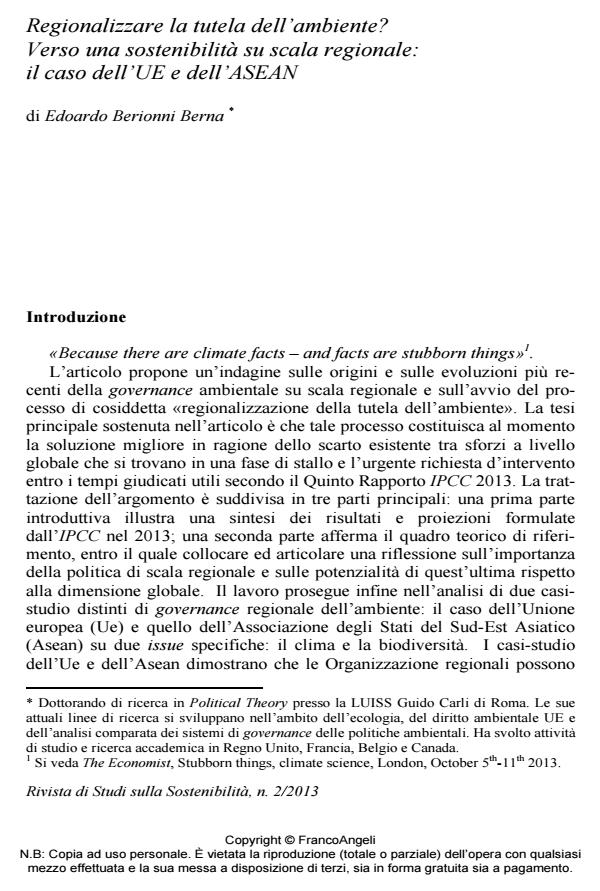Regionalizing environmental protection? Towards a regional-scale sustainability: the case of the EU and ASEAN
Journal title RIVISTA DI STUDI SULLA SOSTENIBILITA'
Author/s Berna Edoardo Berionni
Publishing Year 2014 Issue 2013/2
Language Italian Pages 22 P. 107-128 File size 684 KB
DOI 10.3280/RISS2013-002006
DOI is like a bar code for intellectual property: to have more infomation
click here
Below, you can see the article first page
If you want to buy this article in PDF format, you can do it, following the instructions to buy download credits

FrancoAngeli is member of Publishers International Linking Association, Inc (PILA), a not-for-profit association which run the CrossRef service enabling links to and from online scholarly content.
The article offers a survey on the origins and the most recent developments of regional-scale environmental governance and the beginning of a process of socalled «regionalization of environmental protection». The main argument put forward in the article is that this process is currently the best solution in response to existing global policy gridlock and pressing calls for action within Fifth IPCC 2013 Report guidelines. After the explanation of the theoretical framework, the work will introduce two different case-studies of regional environmental governance: the EU and the ASEAN. Finally, they prove that regional organizations can represent an interesting laboratory for environmental governance from which to start rethinking and looking for innovative and realistic responses to the most compelling challenge of our era.
Keywords: Environmental governance, Regionalism, Climate Change, European Union, ASEAN, Sustainable Development.
Berna Edoardo Berionni, Regionalizzare la tutela dell’ambiente? Verso una sostenibilità su scala regionale: il caso dell’UE e dell’ASEAN in "RIVISTA DI STUDI SULLA SOSTENIBILITA'" 2/2013, pp 107-128, DOI: 10.3280/RISS2013-002006